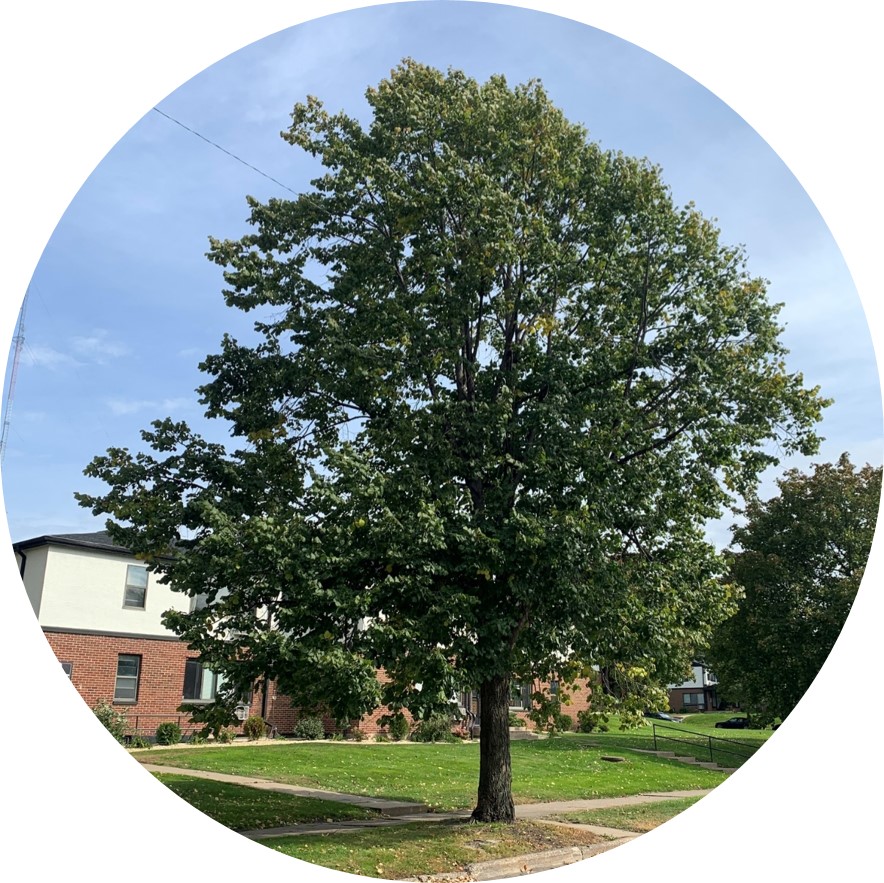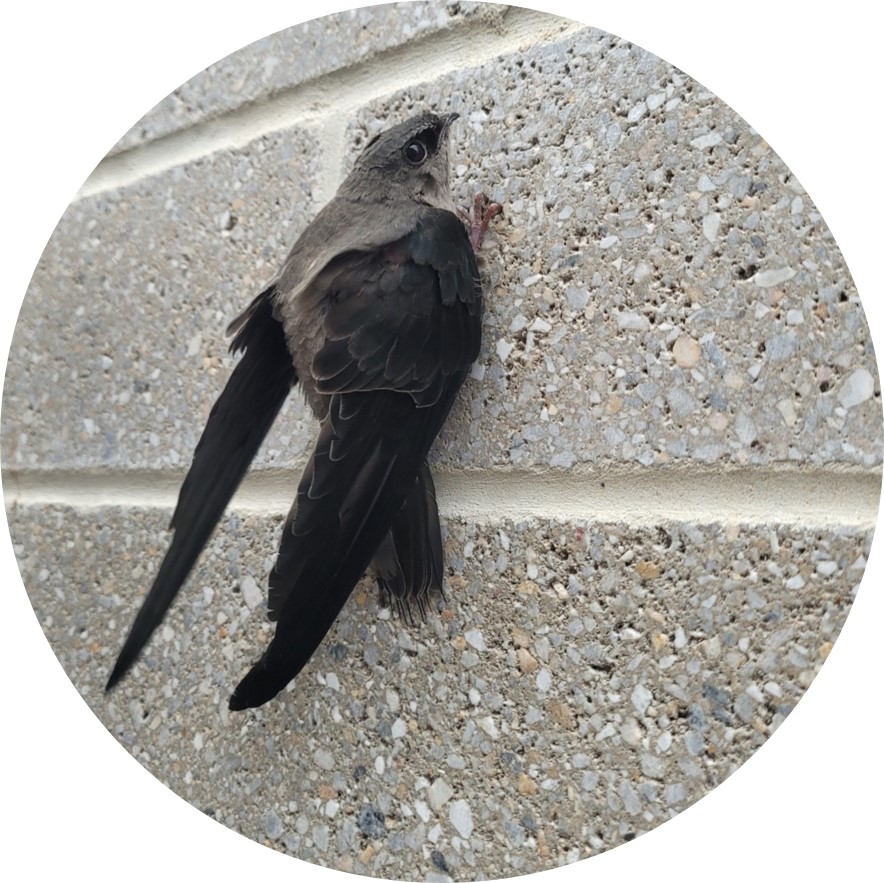Cities are full of nature and opportunities to witness phenology.
What makes a site excellent for observing phenology is not how "wild" it is, but rather, how suitable it is for you to spend time, slow down, and pay attention to living beings around you. For many people, that place is a city, suburb, or town.
Cities are like laboratories for learning how urbanization influences phenology. In a city, seasonal patterns can differ substantially from patterns in nearby, less urban environments. This does not mean that urban phenology data are less valuable than data from undeveloped areas. To the contrary, urban phenology data can increase our understanding of complex processes of environmental change.
Suggested plants and animals for city-dwelling people
Basswood trees
Many kinds of trees are easy to observe in cities. One example is the American basswood, which is commonly planted along city streets and in urban green spaces. The phenology of basswoods brings many delights to a city dweller, from fragrant flowers, to a shady canopy, to brilliant golden color in autumn.
Chimney swift
As their name suggests, chimney swifts often nest in chimneys, and take shelter in a variety of human-built structures. These small birds are relatively abundant in cities and present in Minnesota from late April through September.
Common dandelion
Remember how much fun a kid has making dandelion flower chains and blowing seeds into the wind? Phenology lets you tap into that childlike curiosity by looking closely at ordinary weeds and taking interest in all there is to learn by examining their leaves, flowers, and fruits. Dandelions make an ideal study subject because even in densely urbanized areas, they are abundant, easy to find, and convenient to observe.
More suggestions
Start by getting outdoors in your everyday environment and deliberately slowing down. Uncertain where to go? Consider any short walk you take to drop off mail, walk a dog, get to the bus stop, or simply breathe fresh air. Take note of trees and other plants that grow in your everyday environment. Then notice any animals that visit or take shelter near those plants. If you cannot identify the species you are looking at, ask an expert, or upload a photo to iNaturalist where an online community can help identify your observation.
Some of the species you are likely to find in or near cities are listed below, organized by landscape features. Nature's Notebook supports phenology observations on an even greater variety of plants and animals.
- Boulevard trees
- Landscape trees and shrubs
- Urban birds
- Feeder birds
- Pollinator gardens
- Rivers, lakes and ponds
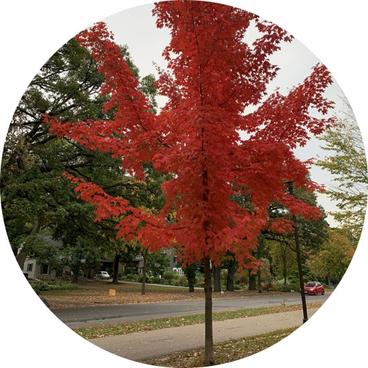
Photo © Amy Shaunette, some rights reserved (CC-BY-NC), iNaturalist observation
A boulevard refers to the strip of land between a road and a sidewalk. Some common boulevard trees that are featured on the Season Watch website include:
- American basswood (Tilia americana)
- American elm (Ulmus americana)
- Red maple (Acer rubrum)
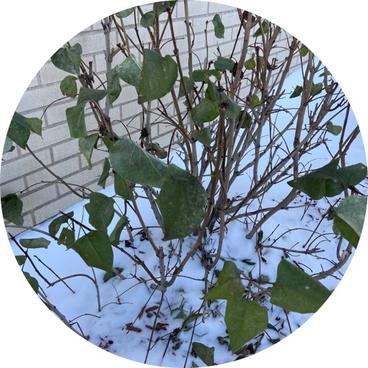
Photo © brockd, some rights reserved (CC-BY-NC), iNaturalist observation
One of the oldest phenology programs in North America focuses on the common lilac. Even though this ornamental plant is not native to North America and frequently grows in managed settings, it is still a good candidate for phenological monitoring because it is abundant and easy to identify. Common landscaping plants that are featured on the Season Watch website include:
- Common lilac (Syringa vulgaris)
- Red elderberry (Sambucus racemosa)
- Serviceberry (genus Amelanchier)
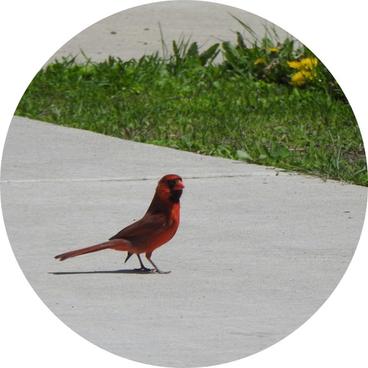
Photo © Liren Varghese, some rights reserved (CC-BY), iNaturalist observation
Many species of birds adapt well to urban environments. Some examples featured on the Season Watch website include:
- American robin (Turdus migratorius)
- Chimney swift (Chaetura pelagica)
- Common nighthawk (Chordeiles minor)
- Northern cardinal (Cardinalis cardinals)
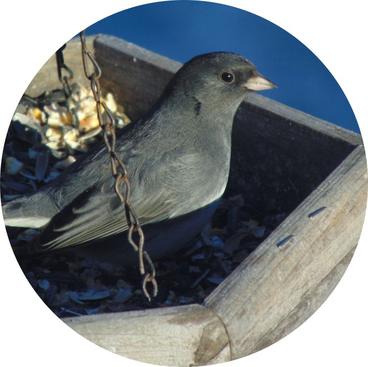
November 2018, Dakota County, Minnesota
Photo © Matthew Thompson, some rights reserved (CC-BY-NC), iNaturalist observation
Some feeder birds featured on the Season Watch website include:
- Dark-eyed junco (Junco hyemalis)
- Pine siskin (Carduelis pinus)
- Rose-breasted grosbeak (Pheucticus ludovicianus)
- Ruby-throated hummingbird (Archilochus colubris)
- Song sparrow (Melospiza melodia)
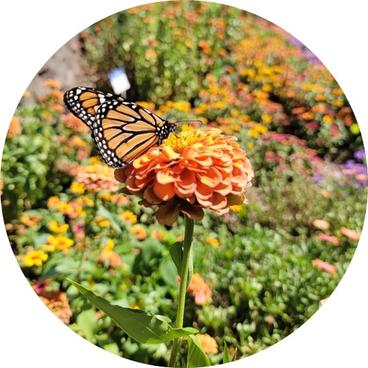
Photo © Sabrina Celis, some rights reserved (CC-BY-NC), iNaturalist observation
Even a small pollinator garden can provide opportunities to observe the following plants and animals:
- Bumblebee (genus Bombus)
- Canada goldenrod (Solidago canadensis)
- Common milkweed (Asclepias syriaca)
- Monarch (Danaus plexippus)
- Purple coneflower (Echinacea purpurea)
- Ruby-throated hummingbird (Archilochus colubris)
- Wild bergamot (Monarda fistulosa)
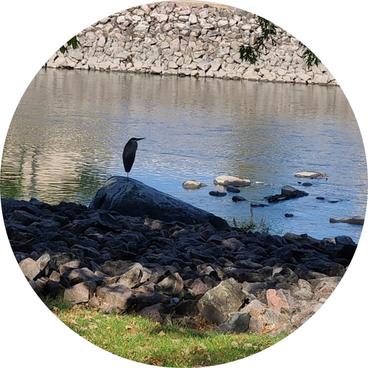
Photo © Peg Furshong, some rights reserved (CC-BY-NC), iNaturalist observation
Observing near water opens up vast possibilities for your phenology practice. The range of plants and animals near you will vary, but here are some example of lifeforms that depend on rivers and wetlands:
- American tamarack (Larix laricina)
- American toad (Anaxyrus americanus)
- Bald eagle (Haliaeetus leucocephalus)
- Boreal chorus frog (Pseudacris maculata)
- Common green darner (Anax junius)
- Common loon (Gavia immer)
- Great blue heron (Ardea herodias)
- Lake whitefish (Coregonus clupeaformis)
- Mosquito (genus Aedes)
- Painted turtle (Chrysemys picta)
- Pied-billed grebe (Podilymbus podiceps)
- Red-winged blackbird (Agelaius phoeniceus)
- Spring peeper (Pseudacris crucifer)
- Walleye (Sander vitreus)
- Wood duck (Aix sponsa)
- Wood frog (Rana sylvatica)
